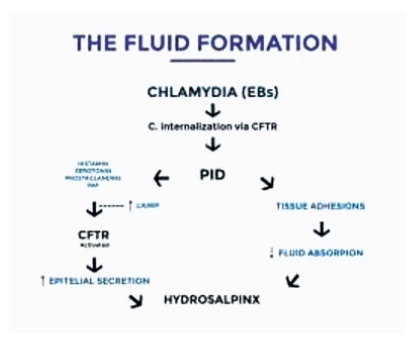Summary
Revista Brasileira de Ginecologia e Obstetrícia. 2021;43(4):304-310
02-18-2021
Hydrosalpinx is a disease characterized by the obstruction of the salpinx, with progressive accumulation in the shape of a fluid-filled sac at the distal part of the tuba uterina, and closed to the ovary. Women with hydrosalpinges have lower implantation and pregnancy rates due to a combination of mechanical and chemical factors thought to disrupt the endometrial environment. Evidence suggests that the presence of hydrosalpinx reduces the rate of pregnancy with assisted reproductive technology. The main aim of the present is review to make an overview of the possible effects of hydrosalpinx on in vitro fertilization (IVF).We conducted a literature search on the PubMed, Ovid MEDLINE, and Google Scholar data bases regarding hydrosalpinx and IVF outcomes. Hydrosalpinx probably has a direct toxic effect on sperm motility and on the embryos. In addition, the increasing liquid inside the salpinges could alter the mechanisms of endometrial receptivity. The window of endometrial receptivity is essential in the implantation of blastocysts, and it triggers multiple reactions arising from the endometrium as well as the blastocysts. Hydrosalpinx could influence the expression of homeobox A10 (HOXA10) gene, which plays an essential role in directing embryonic development and implantation. Salpingectomy restores the endometrial expression of HOXA10; therefore, it may be one mechanism by which tubal

Summary
Revista Brasileira de Ginecologia e Obstetrícia. 2001;23(10):627-631
07-01-2001
DOI 10.1590/S0100-72032001001000003
Purpose: to analyze the pregnancy rates after laparoscopic and microsurgical treatment of hydrosalpinx. Methods: from July 1996 to May 1999 thirty-nine infertile patients with hydrosalpinx were treated according to a previously approved research protocol. They were randomly divided into two groups, according to the previously proposed surgical approach: laparoscopic or open microsurgical salpingostomy. To analyze the results, patients were stratified according to tubal damage, and pregnancy rates in both groups were determined for 24 months. Results: pregnancy rates in our series were 35.3 and 33.3% after laparoscopic and microsurgical salpingostomy, respectively. According to the severity of tubal damage, patients with mildly and moderately damaged tubes got pregnant in 66.7 and 21.7% of the cases, respectively. Cumulative pregnancy rates in one and two years were 25.0 and 34.4%, respectively. There was a single case of ectopic pregnancy, corresponding to 9.1% of all pregnancies. Conclusion: patients with mild and moderate lesions may be initially treated with surgery, and conception success is inversely proportional to the degree of tubal damage.